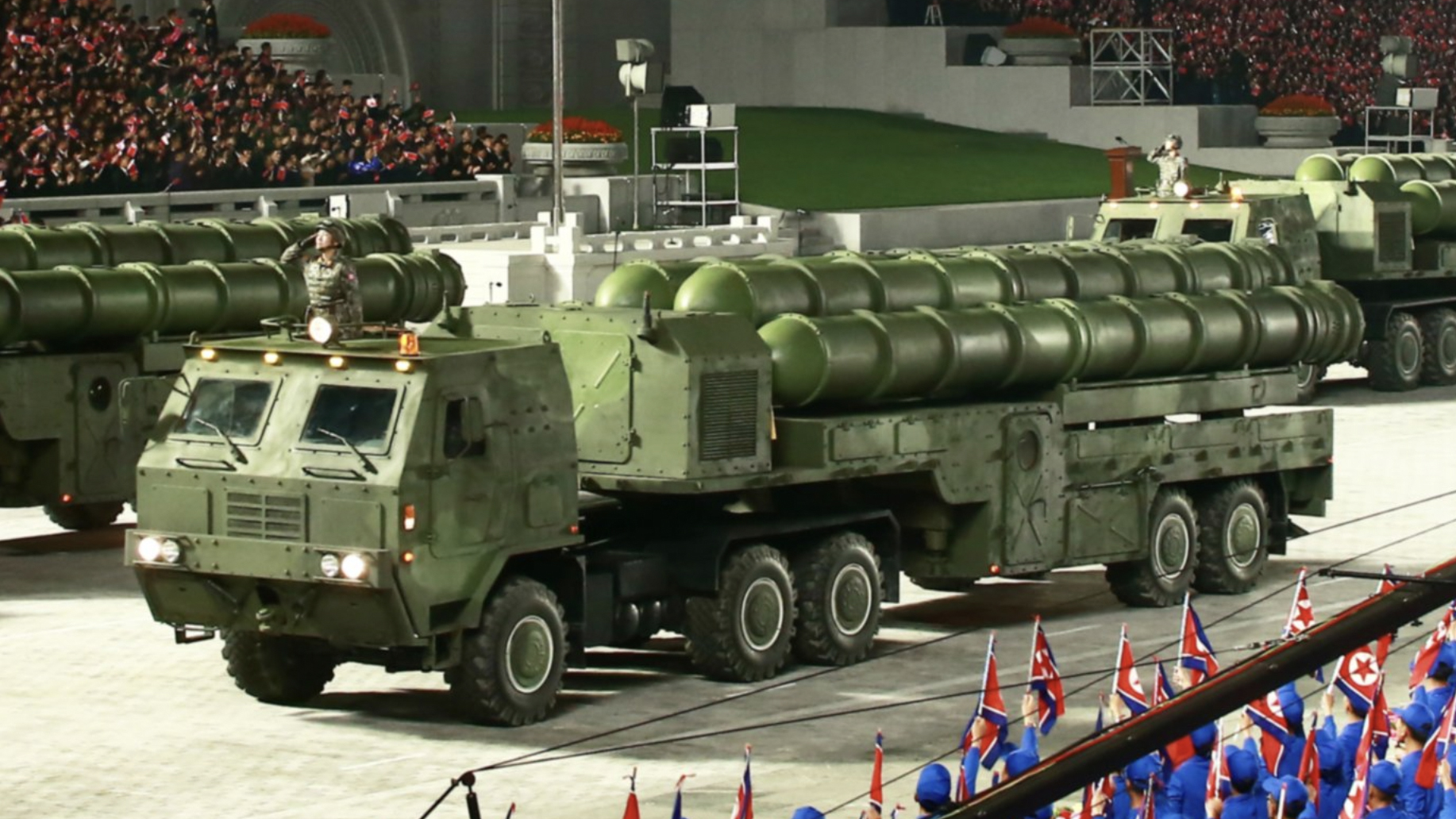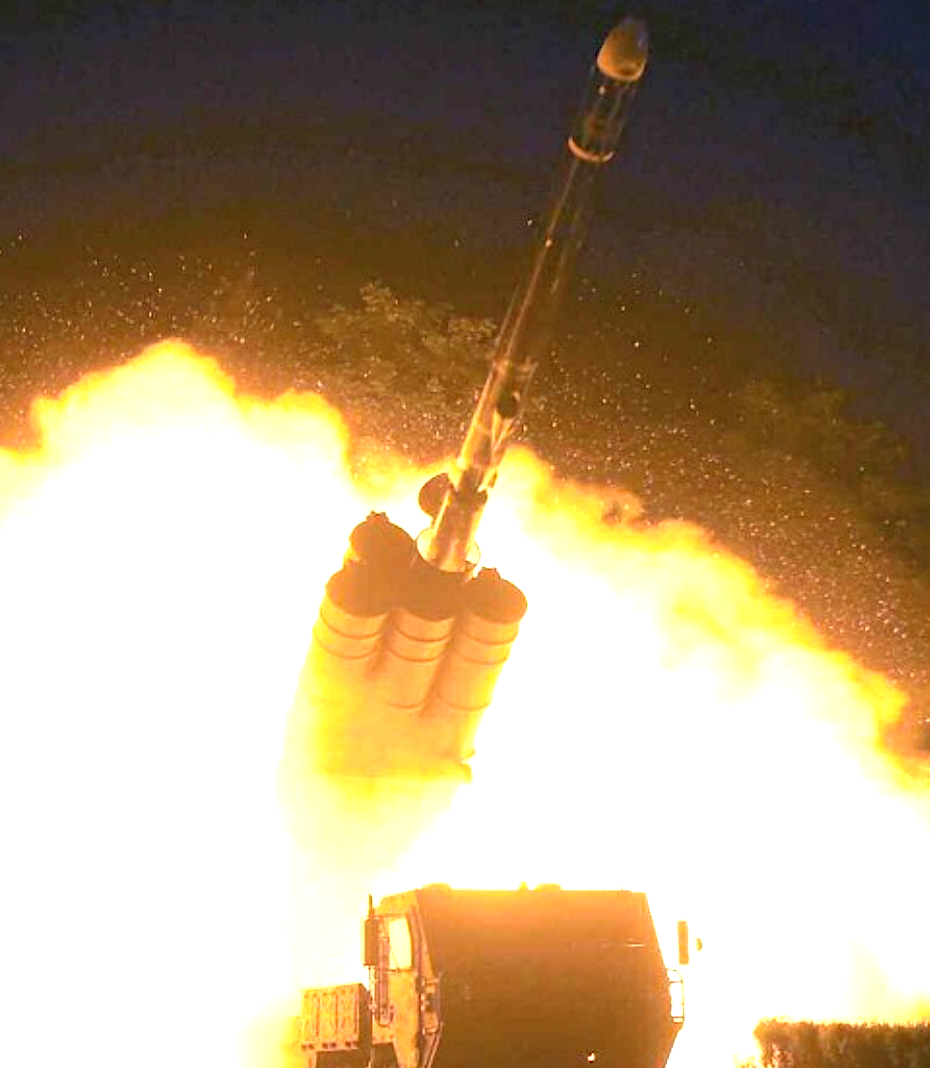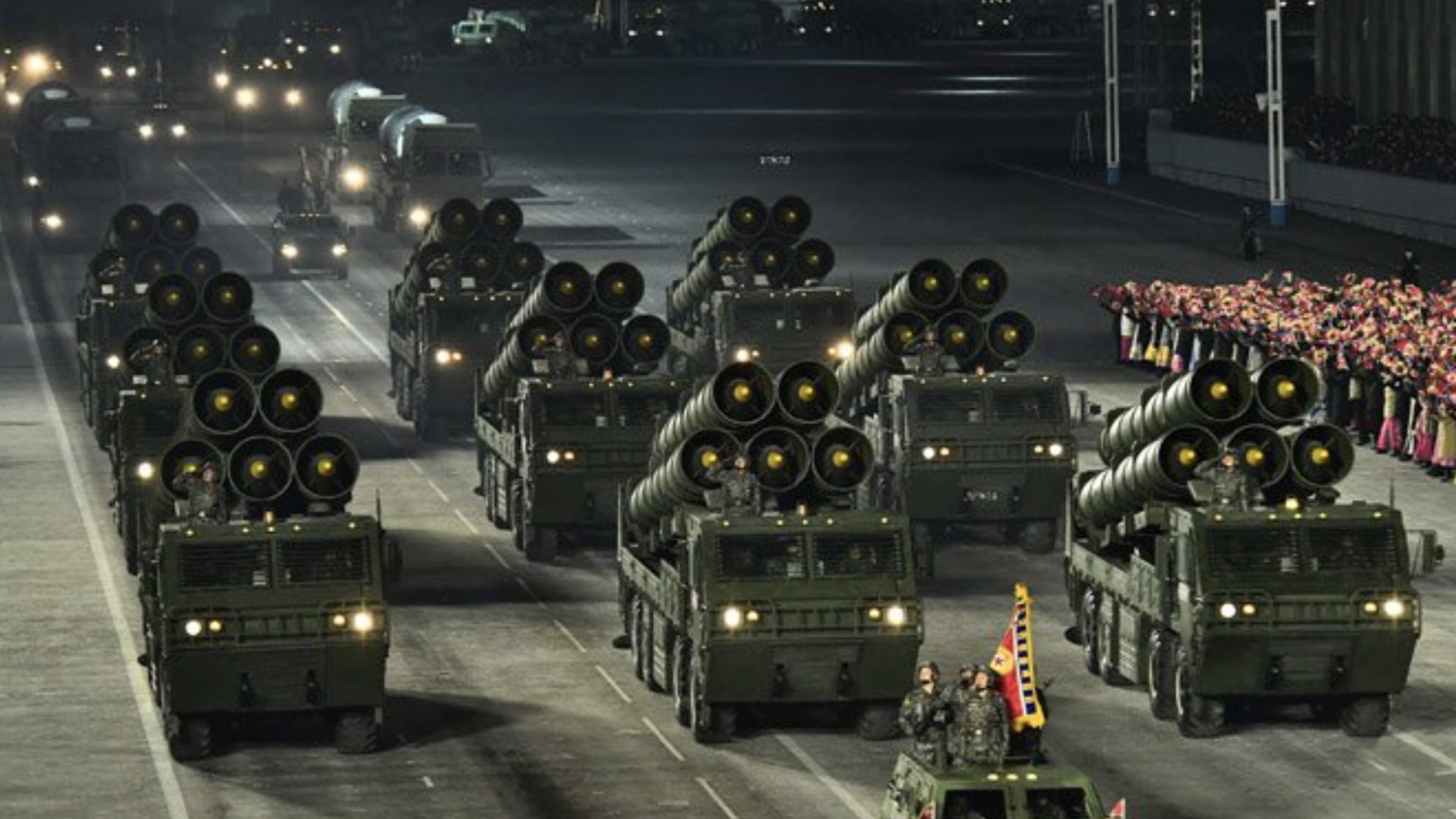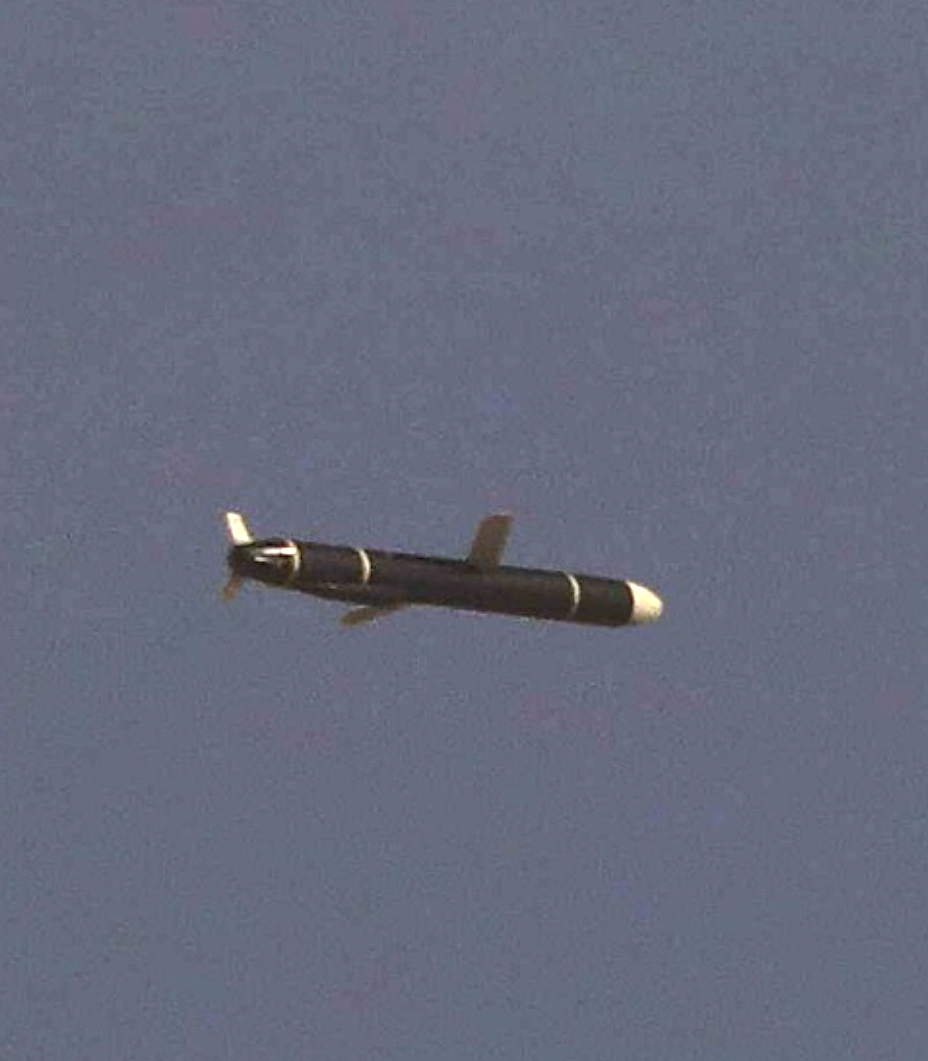A ground-launched cruise missile, which North Korean media describes as “a strategic weapon of great significance,” has been successfully tested, according to the country’s state media outlet KCNA. The new cruise missile, the latest in a long line of increasingly advanced strategic weapons developed by the North Korean regime, could potentially provide the country with an important new capability, with a low-flying standoff weapon able to strike anywhere in South Korea, and even as far as Japan. In this context, the use of the word “strategic” normally implies the carriage of a nuclear warhead.
KCNA reported that several examples of the as yet unidentified cruise missile were tested on both Saturday and Sunday, the first such high-profile missile trials since March when a new tactical short-range ballistic missile was tested.

North Korean state media said the missile flew a distance of 930 miles before coming down in North Korean territorial waters, after a flying time of 126 minutes along “oval and figure-of-eight flight orbits.” Development of the new weapon reportedly took at least two years, but there have been several previous hints that it was close to being tested.
According to the KCNA, the weekend’s tests demonstrate the “strategic significance of possessing another effective deterrence means for more reliably guaranteeing the security of our state and strongly containing the military maneuvers of the hostile forces.”
A pair of photos published by Rodong Sinmun, the official newspaper of North Korea’s Workers’ Party, show a missile being launched from a five-round truck-mounted transporter-erector-launcher (TEL) as well as the missile in cruise flight. The weapon itself bears a strong similarity to the Russian Kh-55 series cruise missile, especially around the tail section, as well as being broadly similar in configuration to the U.S. Tomahawk.

In response to the reported missile tests, U.S. Indo-Pacific Command (USINDOPACOM) released the following brief statement:
“We are aware of reports of DPRK [Democratic People’s Republic of Korea] cruise missile launches. We will continue to monitor the situation and are consulting closely with our allies and partners. This activity highlights DPRK’s continuing focus on developing its military program and the threats that poses to its neighbors and the international community. The U.S. commitment to the defense of the Republic of Korea and Japan remains ironclad.”
Meanwhile, in Japan, chief cabinet secretary Katsunobu Kato said the government was “concerned” by the reports and that it would continue to work closely with the United States and South Korea to monitor the situation. South Korea, too, said it was analyzing the situation in cooperation with the United States.
So far, the reports and photos suggest that the cruise missile is likely intended to have a strategic role, carrying a nuclear warhead. As such, the weapon would be the first of its kind to be developed by North Korea, at least that has been revealed to the public. That same conclusion is put forward by analysts including Ankit Panda, a senior fellow at the Carnegie Endowment for International Peace in Washington, D.C.
What is so far unknown is whether North Korea has already developed a nuclear warhead small enough to arm a weapon in this class. Although there have been persistent reports of North Korean efforts to miniaturize its nuclear warheads, producing one that can be accommodated within the relatively small dimensions of a typical cruise missile is not easy.
North Korea, in fact, unveiled an apparent intermediate-range land-attack cruise missile during a large-scale military parade last October, and again in January, based on a tractor-trailer configuration. However, the photos released to accompany this weekend’s reported tests reveal a revised, non-articulated TEL vehicle, apparently similar to one that was previously associated with large-caliber guided rockets. This has a different configuration of axles, as well as differences in the launch tubes, of which there are now five rather than four.

In January this year, meanwhile, North Korean leader Kim Jong Un announced that the country had developed “intermediate-range cruise missiles” during a speech to the Worker’s Party Congress.
The announcement of the latest cruise missile tests is especially timely, with a meeting between officials from the United States, South Korea, and Japan to discuss the North Korean nuclear stalemate due to begin in Tokyo. Talks with North Korea about lifting U.S. sanctions in return for nuclear concessions have been stalled since 2019.
There is also the possibility that the purported tests at the weekend were scheduled as a response to joint U.S. and South Korean exercises last month. These already led to a predictable outcry from North Korean officials, Kim Yo Jong, deputy-department director of the Central Committee of the Workers’ Party of Korea, describing the drills as “dangerous war exercises” that resulted in “further aggravating the unstable situation.”
Another North Korean cruise missile test took place in January, a matter of hours after U.S. President Joe Biden took office. In that case, however, it involved a shorter-range weapon with no apparent nuclear capability and that was reportedly based on the design of the Russian Kh-35 anti-ship missile.
Notably, North Korea is not prohibited from developing conventionally armed cruise missiles under United Nations Security Council Resolutions (UNSCR). Whether a nuclear-armed cruise missile contravenes UNSCRs is a somewhat moot point, although, as Ankit Panda observes, these should prohibit all types of nuclear-delivery systems.
Since the nuclear talks broke down, North Korea has, however, pressed ahead with its nuclear weapons development, with a new intercontinental ballistic missile (ICBM) and submarine-launched ballistic missile (SLBM) designs unveiled. Furthermore, a report last month from the International Atomic Energy Agency (IAEA) suggesting that North Korea had restarted a nuclear reactor believed to provide plutonium for its nuclear weapons.
In the South, meanwhile, there have also been continued efforts to develop weapons capable of striking the North, albeit without nuclear warheads. Last week, for example, it was reported that South Korea had conducted underwater ejection tests of an SLBM from one of its submarines for the first time. You can read more about that program here.
If Pyongyang is indeed developing a nuclear-capable land-attack cruise missile, it would provide an important new capability alongside its ballistic missiles. While cruise missiles are far slower than ballistic missiles, they are easier to transport and conceal and their launch is typically harder to detect. Moreover, depending on the guidance system available, a cruise missile of this type would potentially be able to evade enemy air defenses. Weapons in this class would typically be assigned to attack high-value targets such as air defenses and communications nodes, bridges and dams, plus larger warships, and defense against them is a growing concern for the United States and its allies more generally.
In a conflict scenario, the ability to deploy cruise missiles could be used to further saturate an enemy’s defenses, with potentially large salvoes of such weapons arriving unexpectedly from different directions. Further confusion would be sown since it would not be clear whether the cruise missiles were carrying nuclear or conventional warheads. The potential threat posed by large numbers of highly mobile North Korean cruise missiles could also tie up a significant portion of Republic of Korea Air Force assets should the South launch an operation to neutralize them.

A cruise missile employed as a means of delivering a nuclear warhead could also have other, particular, advantages for North Korea. To date, one key uncertainty regarding North Korea’s nuclear delivery capability is whether it is able to actually fuse and detonate a nuclear weapon properly as part of the terminal stage of a ballistic missile attack. The very high speeds involved make this a highly complex procedure, a challenge that would be removed when using a cruise missile.
Furthermore, the development of a practical land-attack cruise missile design could lend itself to other applications. Most obviously, a cruise missile like this could be adapted for naval or air-launched use. While a ship- or submarine-launched naval derivative of such a weapon seems far more likely, North Korea has, in the past, reportedly also pursued a secretive air-launched land-attack cruise missile program that has examined utilizing air-launched derivatives of naval missiles for its fleet of Il-28 bombers, of which there are around 80, according to Flight International.
While the South Korean military does not have any nuclear warheads of its own, its attack plans in case of a war with the North are known to feature the use of ballistic missiles, cruise missiles, and air-launched weapons. South Korea’s Hyunmoo-3 cruise missile can be fired from ground-based launchers or from sea-based platforms, depending on the version. The longest-range Hyunmoo-3C has a reported range of 930 miles, the same as attributed to the new North Korean missile.
While cruise missiles, therefore, are already a feature of the military balance on the Korean peninsula, a nuclear-armed weapon in this category is a new development and could have significant repercussions. Above all, however, it remains to be seen how it will affect the gridlocked nuclear talks with North Korea and how the United States will respond to this latest addition to Pyongyang’s expanding strategic capabilities.
Contact the author: thomas@thedrive.com
